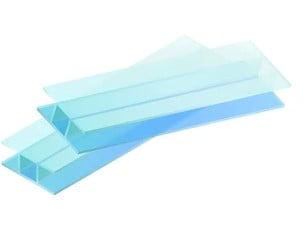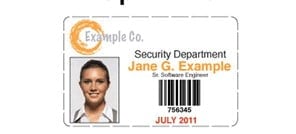Last Updated on: 7th May 2023, 11:50 am
Beginner Guide for ID Card Materials
In the past, people used simple paper to create an identification card. Today, it has changed. The identification card that we can find today uses various materials that have better durability and flexibility than paper.
However, if we have to say the common material used for making a fake ID, there are only three materials that are widely used. They are Polycarbonate, Teslin, and PVC. In this article, you will learn more about them.
Most Popular Fake ID Substances in 2023
Before we talk about how the best fake id websites uses the material to create identification cards, first of all, you should know what they are:
- Polycarbonate is one of the strongest thermoplastic materials that are used a lot for bullet-proof glass and indestructible protectors, which make it also the safest material for an ID card.
- Teslin is a synthetic paper with high flexibility, easy for printing jobs, tear-resistant, and waterproof properties. Due to its flexibility, it is compatible with various printing methods.
- PVC is a synthetic plastic polymer with high flexibility and durability that is used for many items in manufacturer and daily use. The PVC-based card can last for at least eight years.
How Polycarbonate, Teslin, and PVC are Used for Making Identification Cards?
So, how are these materials used? Here, we have some of the explanations about each material for making identification cards.
1. Polycarbonate


Nowadays, Polycarbonate has been used as the core material for driver’s licenses and ID cards in North America. The government uses many layers of 100% polycarbonate sheets, which create one of the strongest materials for the card.
Each sheet and layer in the card made of Polycarbonate has a different purpose. There is the front and back sheet which is for security and protection printing. It also has a sheet that the various devices can detect with its optical sensor.
Today’s ID card also has a sheet to install the antennae or chip for detection purposes. Those combinations create a high-quality card with a top security level. Because it has so many sheets, the printing process on Polycarbonate cards requires a high level of skill. The printing should be able to show the information, without obstructing the features of the card, like the sensor and chip function.
Pros
- Polycarbonate card doesn’t require adhesive or something similar to build all layers and sheets into a piece of card.
- This material has microscopic hair that will fuse after being applied by heat and pressure.
- The assembling process is also similar to its printing process, which requires a special skill. However, this composition allows the ID card to last for at least ten years.
- It is also compatible with transparent windows design, positive & negative embossing, and various features for tactile recognition.
- Thanks to this material’s versatility, you can add various security features, including AAMVA Level 1 security features.
Cons
- Because of its composition, you need specialized equipment, including laser modules, to create an ID card using Polycarbonate material.
- It costs you more than Teslin and PVC for creating a piece of card.
- Once all layers have been combined, you can’t tamper it or change its composition.
- The document could have a changeable laser image (CLIs) to prevent document forgery.
Moreover, the Polycarbonate card also doesn’t require adhesive or something similar to build all layers and sheets into a piece of card. This material has microscopic hair that will fuse after being applied by heat and pressure.
Therefore, the assembling process is also similar to its printing process, which requires a special skill. However, this composition allows the ID card to last for at least ten years.
2. Teslin


Teslin material offers one of the best flexible surfaces, where you can print all kinds of ID card information on it by using various printing options. It is compatible with dye-based inkjet printing, offset printing and laser printing.
Therefore, in terms of production cost, the ID card made of Teslin is much better than Polycarbonate. The equipment is easy to acquire, which gives it more benefits in its price.
You can find many driver licenses from the United States that are still using Teslin material. These cards use the offset printing method to create detailed information printed on their surface.
As for the protection feature, it uses a different method than the Polycarbonate card. For Teslin cards, it uses guilloche, rainbow, and micro-text printing. Then, it still needs a laminated layer to protect the printed surface. In the laminated layer, you also can find embossing text or holographic lamination to add extra protection to the card.
Pros
- It is easily accessible. You can even buy a Teslin sheet or at the size of ID-1 (CR-80) template card.
- Teslin is a good choice for bulk buying. The price of the fake Teslin card is also much cheaper. You can get its material for only 85 cents per sheet.
Cons
- Teslin ID card is easy to copy and counterfeit industry thrives on making Teslin fake ids.
- The counterfeiters peel the lamination layer and print new data or even use the removed lamination layer to the new fake card.
- The substances is often used with a lamination layer to protect its surface which can be easily manipulated.
Moreover, the Teslin card also is not suitable for barcode printing and optical sensor safety features. Unfortunately, many driver licenses are still using this material.
Even though there is already a Real ID Act that regulates ID card production, many states are still using the old manufacturing methods. We think it is the right time to move to a better method and material, in this case, Polycarbonate, to ensure the safety of the ID card that people have.
3. PVC


One of the best things about PVC is the counterfeit protection. Compared to Teslin, PVC is much more complicated to forge and duplicate. The fake one doesn’t have micro text. It also has a less-detailed line.
The fake one has yellow, cyan, and magenta colors that are easy to spot by inspectors. Even though PVC material for an ID card is easy to get on the internet, creating a perfect ID card for this material is difficult.
Even though it has better protection against counterfeit than Teslin, PVC is still not the best choice for an ID card with better protection features. The material is easy to get. Moreover, it requires expert eyes and experience to differentiate the fake from the real one. If you don’t have them, mostly, you will believe that the fake card is the real one.
The Best Choice
According to the explanation above, we can easily see that Polycarbonate is the best choice for any fake id card. Even though the current ID card is still not made of this material, there are efforts from the government to migrate to use this material.
It has a better lifespan, which is suitable with the Real ID Act, where the card should get renewal every 5-10 years. So, the better lifespan of a Polycarbonate ID card will ensure that the information printed on it won’t fade out. Furthermore, it also can protect the identity of the card owner.

If you look at the new Nebraska ids, they are also printed using Polycarbonate. Most ids issued by the DMV are on Polycarbonate while some states still use Teslin but that won’t be for long. Fake ids printed on other materials will be irrelvant by the mid-2022.